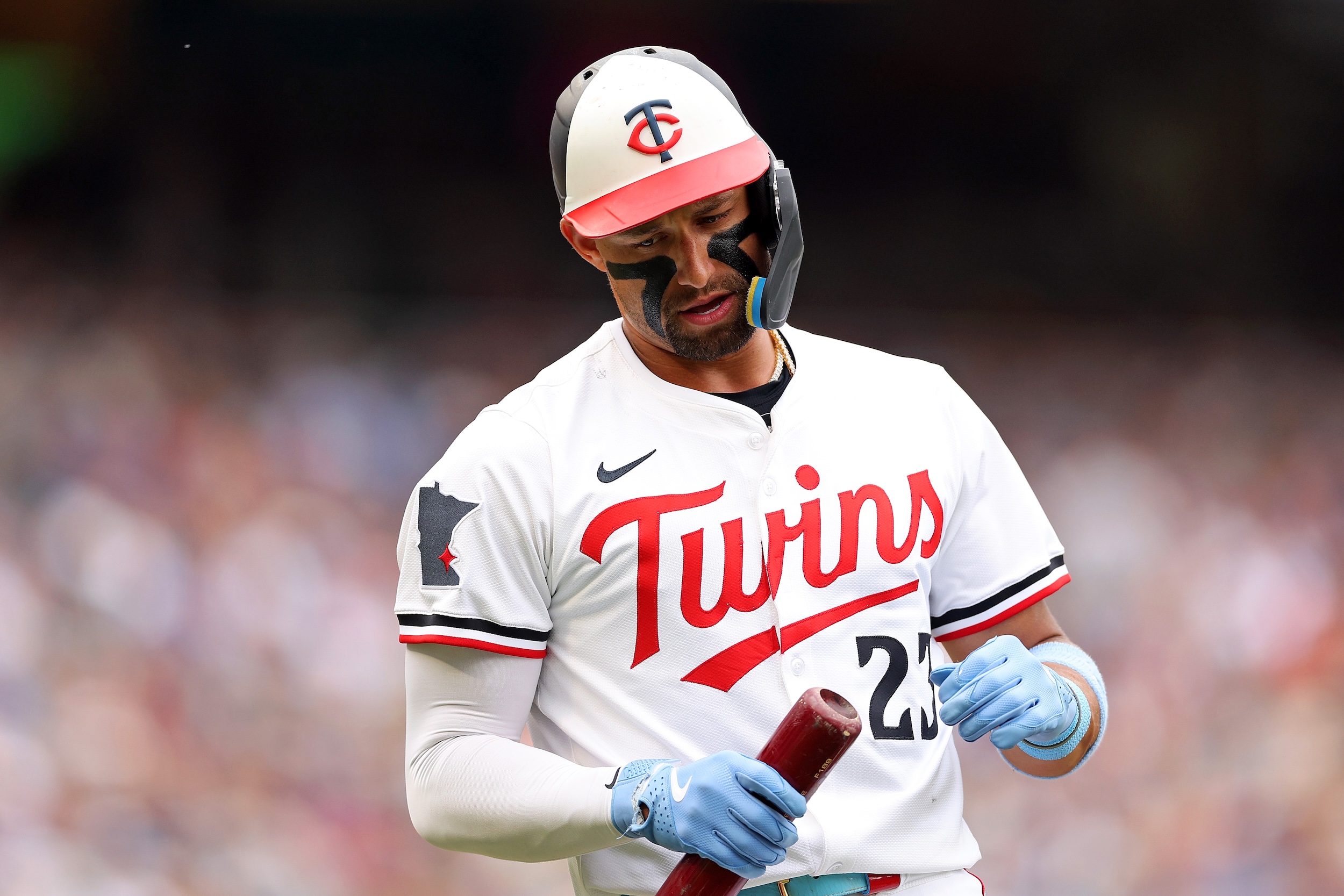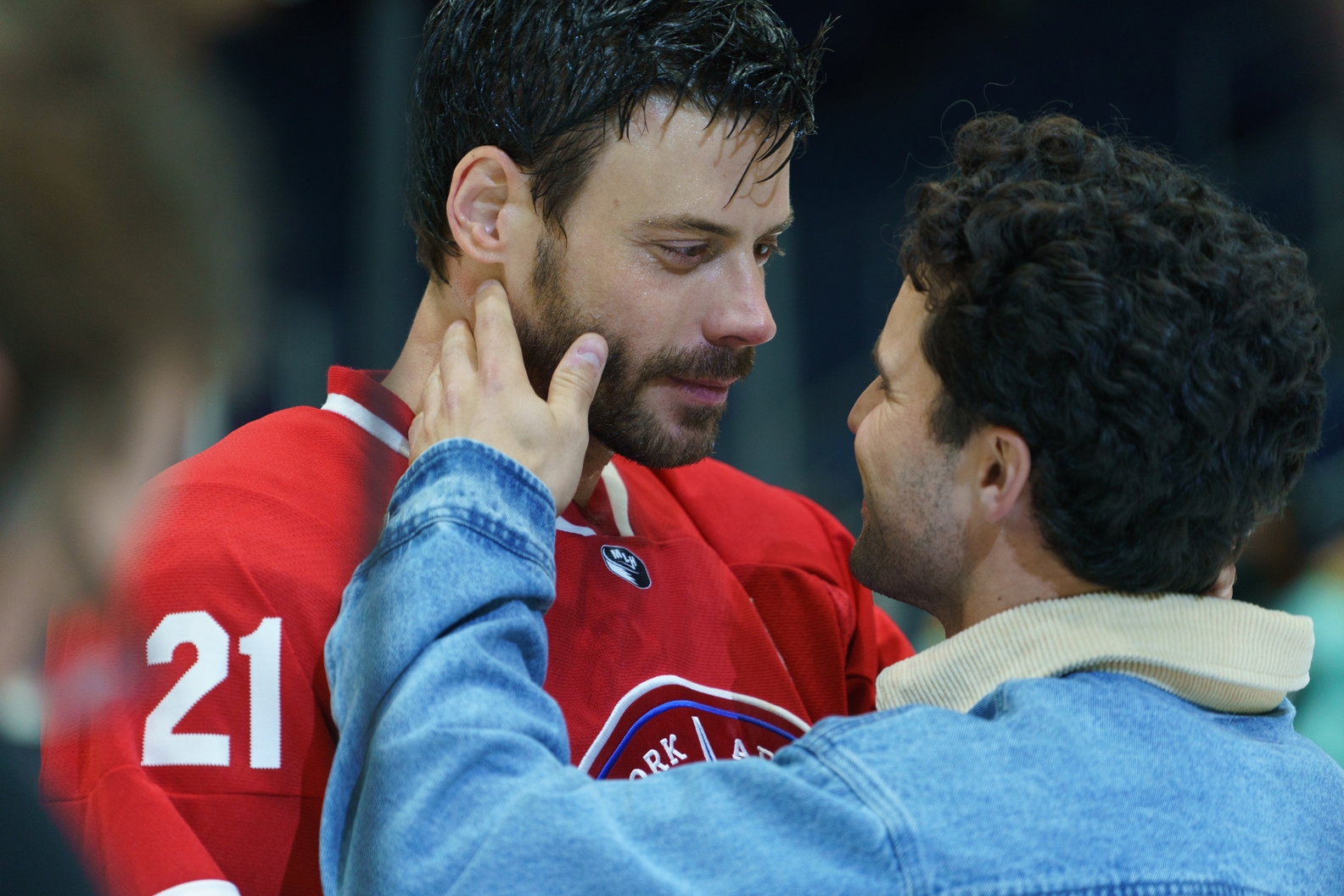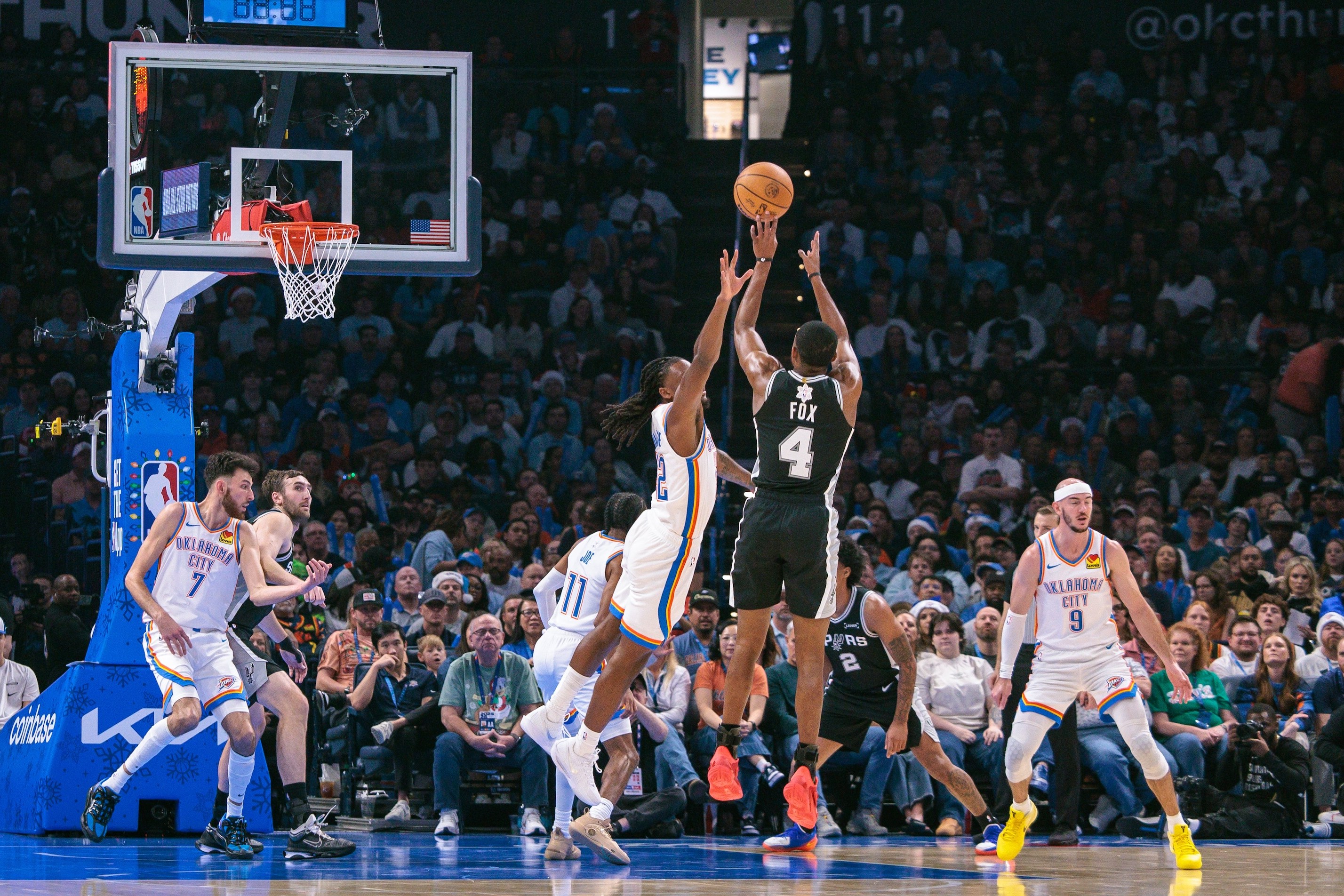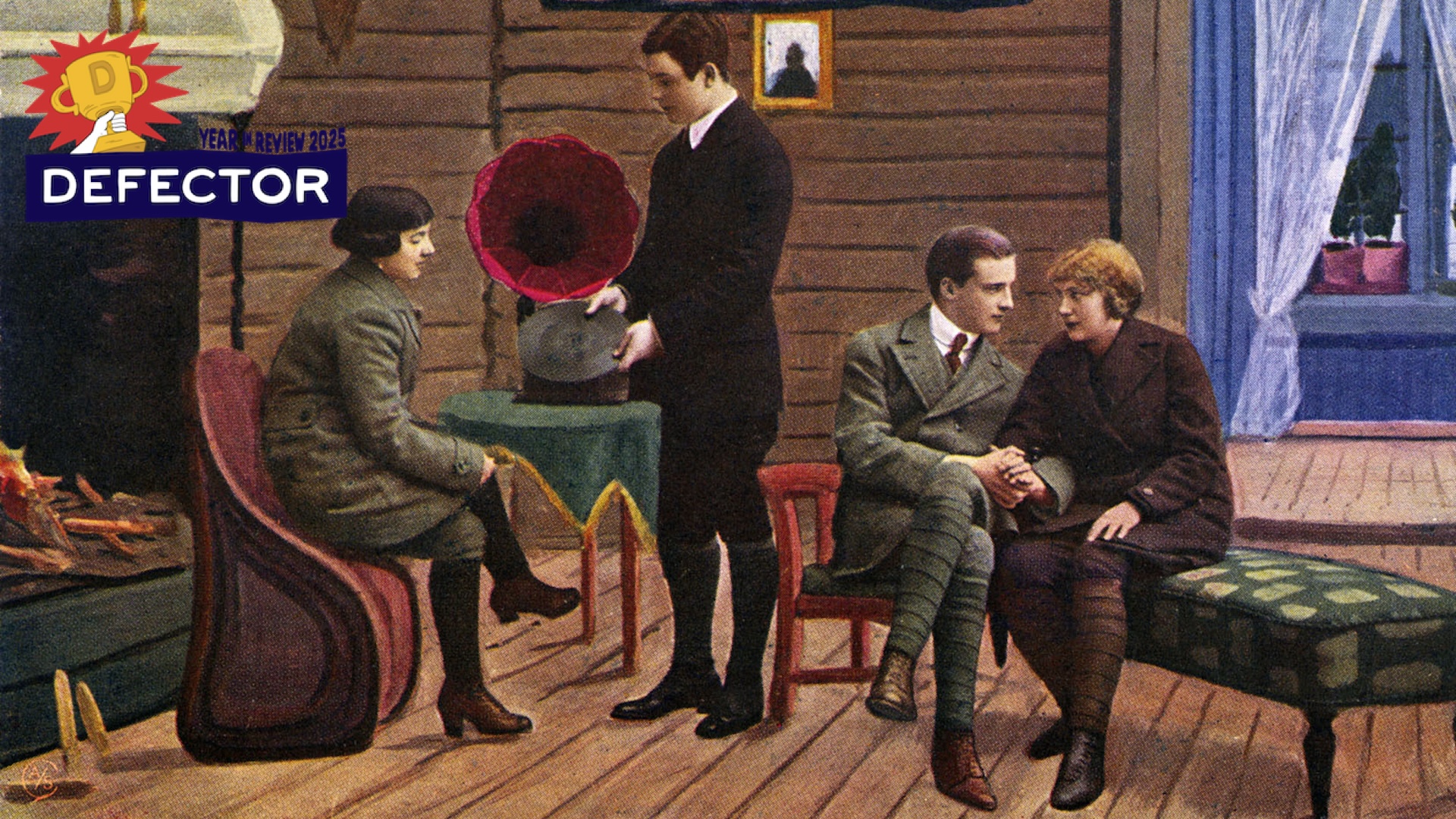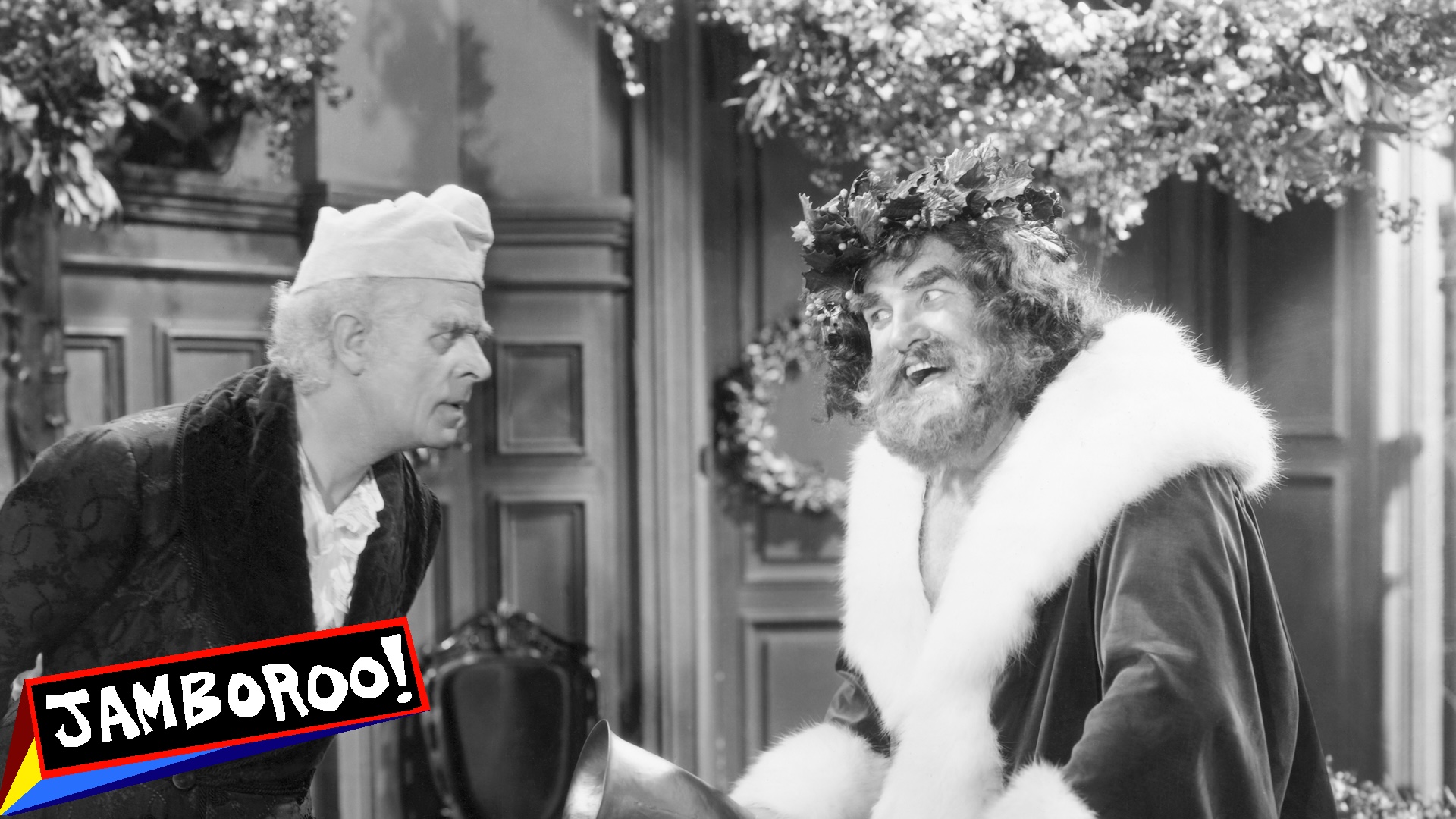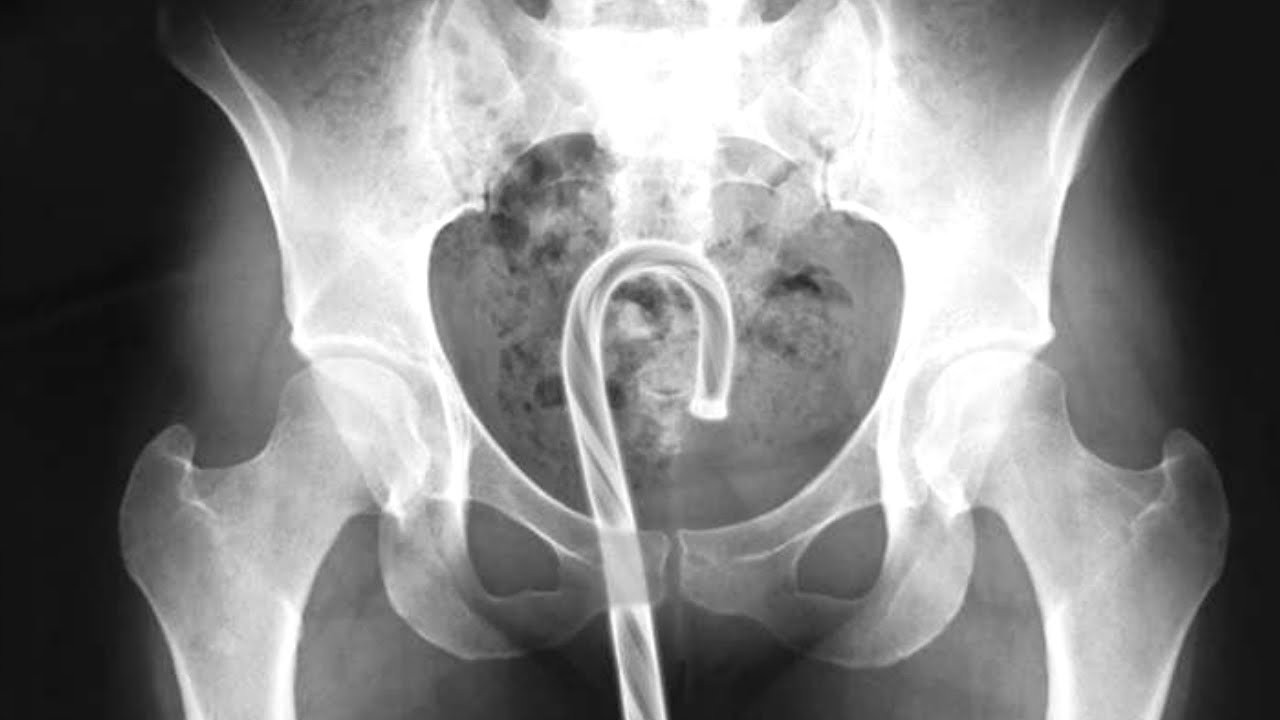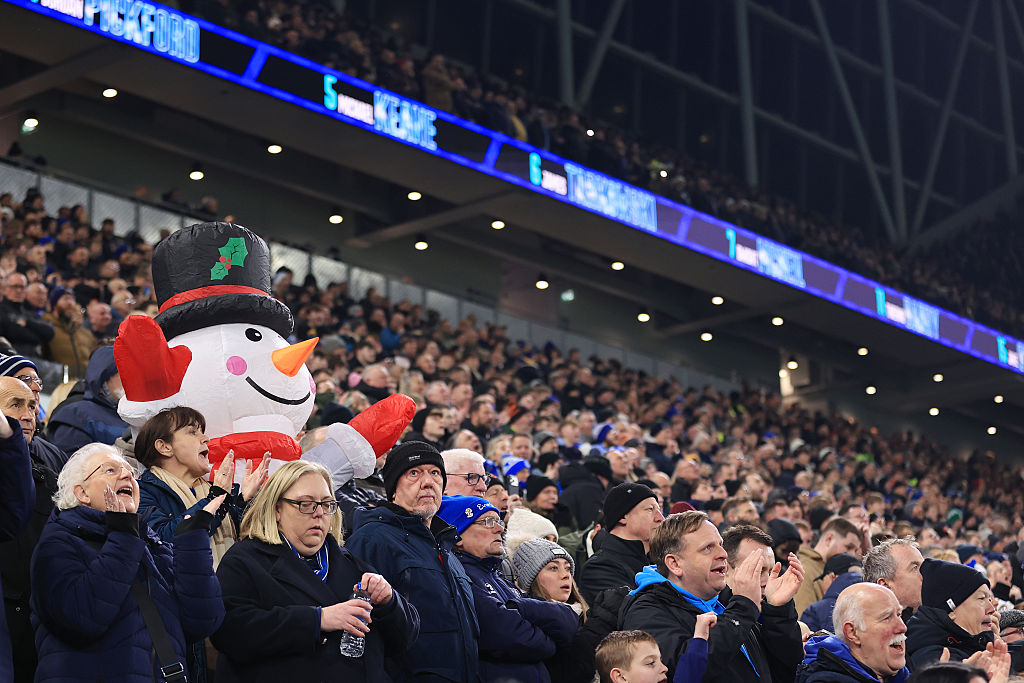I had an unusually hard time finding a feature photo to go atop this blog. Almost none of this is the fault of the couple of Getty photographers who hang around the Minnesota Twins. For one thing, I was on the hunt for an image of a player who is still on the team. But ahead of the Thursday trade deadline, the Twins shipped out approximately 40 percent of their major-league roster, including nearly everyone of any present value, so the options were not great. For another—and I want to reiterate that I am not blaming anyone for this—photographers David Berding, Matt Krohn, Rob Tringali, and Brace Hemmelgarn show a strong preference for compositions featuring cool things happening and players being happy. I was looking for something that matched the vibes of what is left of the Minnesota Twins, but since I could find no recent images of Byron Buxton hitchhiking along I-35W, or of Joe Ryan staring at the horizon with tears streaking his face, I had to settle. That up there is the perma-crabbed Royce Lewis, looking ambiguously pensive; I am like 80 percent sure Lewis is still a Twin today, although he is never more than one misplaced banana peel away from a four-month stint on the injured list.
The Twins were not the only team that spent the past few days selling, but their version of selling was by far the most gruesome and dispiriting. They first entered the Deal Zone Monday, a rare early mover in a deadline that otherwise took a while to shake loose. Their swap of Chris Paddack and reliever Randy Dobnak to the Detroit Tigers for a surplus catching prospect down at the Florida Complex League signaled pretty definitively that the Twins would be parachuting out of the American League's wild card hunt. The fire sale did not shift into high gear, though, until Thursday, when some poor social media person spent the afternoon firing off "Thank You" posts to just about anyone on the roster that president of baseball operations Derek Falvey could exchange for a reasonably fresh ham sandwich.
In at least one of these cases, the Twins took less than a ham sandwich. Falvey pulled the trigger on a deal that returned underperforming star shortstop Carlos Correa to the Houston Astros. You might consider this a puzzling risk by the Astros, trading for an expensive but hobbled 30-year-old shortstop when their own star shortstop, Jeremy Peña, is days away from returning to action, and when the team just picked up Ramón Urías from the Orioles to man third base. It turns out Houston's cost for Correa was nauseatingly low: The Astros shipped out a 26-year-old minor-league pitcher who has never made it above High-A, who presently sports an earned run average over 7.00, and who has been among the worst pitchers on every team of his professional career. Also, the Twins strapped $33 million in cash to Correa's back, or nearly a third of the guaranteed salary left of his current contract, per Spotrac. Just over two years ago, the Twins signed Correa to the most expensive deal in franchise history; on Thursday they paid someone else simply to remove him from their books.
That was the signature lowlight of Minnesota's deadline bloodbath. Perhaps more painful and ominous for Twins fans, though, was the last minute shedding of 27-year-old righty reliever Louis Varland, part of the team's total dismantling of its bullpen. Varland is a reasonably promising farm-raised local kid who won't even hit arbitration until after the 2027 season, and the Twins shipped him out with an expiring Ty France for a couple of Blue Jays prospects who do not meaningfully raise anyone's heart rate. If Correa's salary dump signaled that the Twins must and will become cheaper, the Varland trade tells the team's fans not to bother hoping for a quick or efficient turnaround. They are getting out of the business of competing, and for long enough that the five entire years of team control left before Varland hits free agency make him more valuable as a trade chip than as a good pitcher who fans could rally around amid a painful rebuild, and who could be a part of the next contending Twins team. The message to fans is: Do not get very attached to this baseball team.
That is also the message to the poor baseball suckers who are still stuck in Twins jerseys, one of whom told Dan Hayes of The Athletic that "no one wants to stay" in Minnesota now that the team has self-detonated. The disillusionment flows from the very top of the organization: The Pohlad family, led by plastic-looking heir and wannabe Big Business Guy Joe Pohlad, is seeking to sell the franchise. They thought they had a deal with Justin Ishbia over the winter, only for Ishbia to pull out and instead invest in a larger minority share of the dreaded Chicago White Sox. The Athletic reported in March that Pohlad has his eyes on a sale price in the range of that fetched in recent sales of the Baltimore Orioles and the stadium-less Tampa Bay Rays, and turned down a sale opportunity that valued the Twins at a mere $1.5 billion. Sale efforts are weighed down by a hefty $425 million in debt, a figure that undoubtedly motivated Thursday's sell-off and the franchise's outright abandonment of this era of competitive ambition.
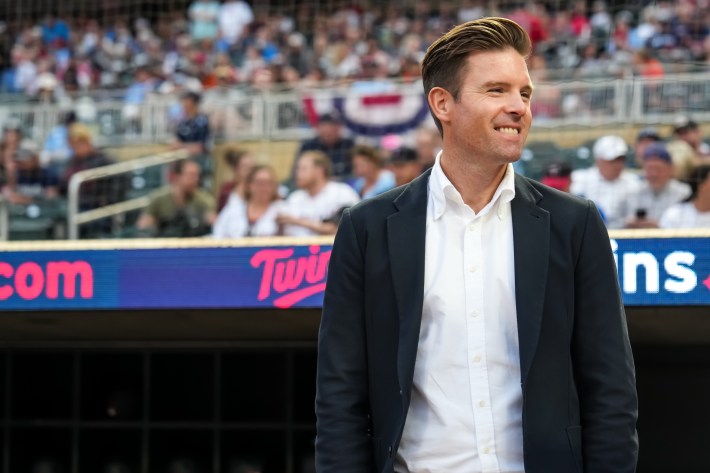
Pohlad has been infuriatingly unapologetic about sandbagging his otherwise competitive baseball team with ill-timed belt-tightening. "That’s just the reality of my world," he said back in September, of the Twins shedding $26 million in salary ahead of that busted 2024 season. "I have a business to run, and it comes with tough decisions, and that’s what I had to do. I wouldn’t make any other decision, because that’s the position that we were in. That’s our reality." That reality translates once again as a warning to fans not to invest hope in this team, not while the Pohlads own it. It was in the long echo of that message that Correa asked for a meeting with Falvey on Wednesday of this week, per The Athletic, and in that meeting learned that the Twins did not necessarily share his vision of, you know, trying to be good at baseball. Following a horrendous 13–1 loss that evening, the Twins began whatever is the spiritual and moral inverse of putting their money where their mouth is. Now, Friday morning, the operation is in tatters.
Things came back in these trades that desperate Minnesotans could grab onto, for hope. Taj Bradley seems cool, if wayward as hell. There are a couple of teenaged catching prospects in there who seem interesting. Geremy Villoria is a 16-year-old pitcher who has pitched 14 innings in the Dominican Summer League, so if you eat vegetables and do jumping jacks, you may just live long enough to see him in a Twins jersey. But giving the Twins any credit for what they bought in this massacre sort of misses the point: As with certain other broke-dick Major League operations, once a team has signaled that it is not willing to pay for good baseball, only a very foolish person would bother investing much excitement in the potential of another wave of core players. They will either establish themselves as not good enough to move the needle, or their asset value will outstrip their use to a team managing a low and hard cap on its own ambitions.
Correction: An earlier version of this blog misidentified Louis Varland as a lefty.
